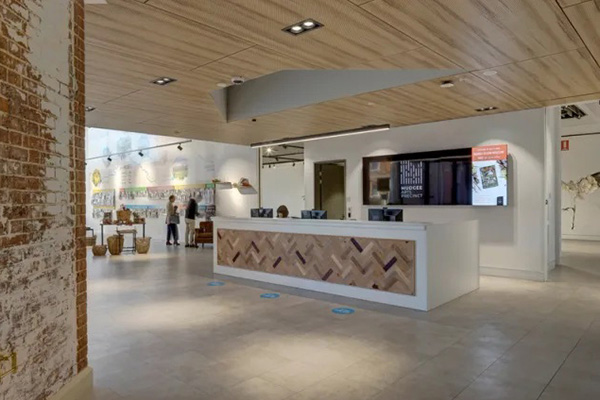The global pandemic has made us increasingly aware of the impact that built environments have on us and there is a growing interest in understanding the universal effects of building design on bodily health.
Designing buildings that promote wellbeing for the end user is important for several reasons including health and comfort, productivity and sustainability.
In this article, we discuss the significance of designing buildings for wellbeing and provide tips on how to achieve it.
Why it's important to design buildings for wellbeing
Health and comfort: A well-designed building can improve the health and comfort of its occupants by providing a suitable indoor environment, reducing stress levels and promoting healthy habits.
Productivity: Good indoor air quality, natural light and suitable acoustics can enhance productivity and creativity, leading to increased job satisfaction and higher performance levels.
Sustainability: A well-designed building can promote sustainability by reducing energy consumption, reducing waste and promoting more efficient use of resources.
Economic benefits: Investing in building design that prioritises wellbeing can lead to higher property values, increased tenant satisfaction and lower turnover, which can result in a better return on investment.
Social responsibility: Building design has a significant impact on the community, and it is important to consider the social and environmental impact of buildings to promote sustainability, equity, and wellbeing for all.

How to build better buildings
Architecture for wellbeing is about building in a way that supports the wellbeing of inhabitants and there are many small but effective ways to achieve this.
Prioritise the acoustics of the space
Acoustics in a building have a significant impact on the wellbeing of its occupants. Poor acoustics can cause discomfort, distraction and stress, while good acoustics can improve comfort, concentration, and overall satisfaction. Factors such as sound insulation, echo reduction, and speech intelligibility all play a role in the acoustic environment of a building and can impact its occupants' wellbeing.
Our acoustic products have been used in healthcare facilities, schools and office spaces to improve the wellbeing of occupants.

Use timber in design
Sustainable architecture aims to create buildings that are healthier not only for their surrounding environment but also its inhabitants. Biophilic design is an approach to architecture and interior design that emphasises the connection between humans and nature. It involves incorporating natural elements, such as plants, water features, natural light and materials into the built environment to promote health and wellbeing.
The idea behind biophilic design is that exposure to nature can help reduce stress and improve cognitive function and overall wellbeing. The aim is to create spaces that not only provide functionality but also enhance the human experience by promoting a connection with the natural world.
Our slatted timber products bring the natural beauty of timber indoors whilst also working to absorb sound for a pleasant experience for the end user – perfect for specifying in buildings aimed to promote wellbeing.

Use non-toxic building materials
Indoor environments and material surfaces tend to host fungi, moulds or molecular-type contaminants like allergens that can come from rodents and pets. Our BioPanel ZapX is a proven antimicrobial system that can be applied to our acoustic panels, providing protection from mould and bacteria.
BioPanel ZapX uses technology to destroy germs and bacteria at a nano level. The formula bonds with the material to which it is applied and becomes intrinsic to that material providing long-lasting protection.
Other hidden hazards include CO2 and volatile organic compounds (VOCs) that originate from a range of materials or cleaning supplies. These pollutants can be detrimental to physical and mental health, particularly when they accumulate.
The most effective way to mitigate the propagation of indoor pollutants is by choosing modern, non-toxic, sustainable building materials that are purposely created for safe construction.
Our MDF is non-toxic and comes with certification to prove it. Although in the past MDF has been questioned over its safety, it is a perfectly safe, sustainable and affordable building material.
Architecture should prioritise the wellbeing of occupants not only for individual health benefits but also for the positive impact it can have on society.
To discuss the acoustic needs of your next project, get in touch with our team of experts.

